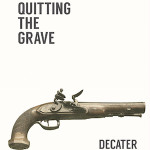The Seven Phases Of A Successful Kickstarter Campaign, Part Four
This is a seven part series on how to properly prepare for a successful Kickstarter campaign. I’m not promising any easy shortcuts. Crowdfunding takes a lot of hard work. But this guide can help you formulate a plan and hopefully give you some good ideas that will lead to a favorable outcome. And when that happens, all the credit will go to you.
Previous Posts: Part One | Part Two | Part Three

4. Create An Appealing Reward Structure
While researching the successful campaigns in your category, pay special attention to the kinds of rewards they offered. This will be nearly as important as the video when it comes time to ask for people to contribute.
I think of the rewards in terms of tiers, and in general, there are 3 of them. Also, your rewards should stack, so if they contribute at the 30 dollar level, that will include the rewards at the 20 and 10 dollar level as well. If it doesn’t, be clear in your rewards description.
Just Want To Contribute Tier: these rewards are less than 20 dollars and, depending on your project, they may even be less than 5 dollars. It’s definitely a good idea to offer something at the low end that allows people to contribute without costing you anything in return except for a gesture. Maybe you’ll tweet a thank you out to your followers or mention their name on the acknowledgements page of your book.
Product Tier: Depending on your product, this could be 20-150 dollars. They are buying what you’re selling. You can be a bit creative with this and offer extras that are only available through the Kickstarter campaign, or deliver the rewards to your contributors before they will become available to the general market.
Experience/Value Added Tier: These rewards are unique perks that will only be available through Kickstarter. Again, creativity is the key. You are providing an experience around your product, whether it’s a factory tour, a home-cooked meal, or a visit to your set. Maybe you’ll let them name a character in your comic book, or even become a character themselves.
When you structure your rewards, it’s vitally important that you make sure you’re leaving enough profit margin. Don’t forget, you have to actually make the products. If you’re raising money to shoot a film, and one of your rewards is a DVD, you may be offering them at 15 dollars a pop, but if it’s going to cost you 12 dollars to produce and mail them, then you are really only getting 3 dollars per donation.
This is where you have to be creative. You want to convince your contributors to pay extra for their rewards by offering something that doesn’t cost you any money (or too much time) but will be of value to them.
And don’t forget the time factor. You may think sending a hand-written thank you note is an inexpensive way to connect with your fans, but if you end up having to write 200 of them, you might end up regretting that decision.
So make sure to carefully plan out your reward structure. You want to offer appealing, original rewards for your contributors that will generate excitement for your campaign. But don’t lose site of your end goal, which is to raise money for your endeavor. Don’t leave yourself over committed, without enough time or money to follow through on the promises you made.
 Check out Decater's new novel, available now at Amazon. Plus, don't forget his earlier books: Ahab's Adventures in Wonderland and Picasso Painted Dinosaurs.
Check out Decater's new novel, available now at Amazon. Plus, don't forget his earlier books: Ahab's Adventures in Wonderland and Picasso Painted Dinosaurs.Related Posts
-
 The Obligatory Year-End Navel Gazing
No Comments | Jan 6, 2014
The Obligatory Year-End Navel Gazing
No Comments | Jan 6, 2014 -
 The Greatest Comment Ever
No Comments | Oct 12, 2012
The Greatest Comment Ever
No Comments | Oct 12, 2012 -
 The Seven Phases Of A Successful Kickstarter Campaign, Part Six
No Comments | Dec 16, 2014
The Seven Phases Of A Successful Kickstarter Campaign, Part Six
No Comments | Dec 16, 2014 -
 Black Lives Matter
No Comments | Sep 16, 2016
Black Lives Matter
No Comments | Sep 16, 2016
About The Author
the good doctor
Life is a constant battle versus my own entropy.